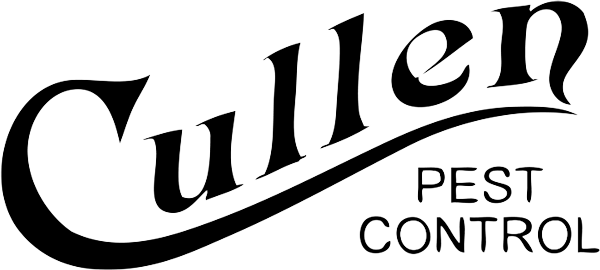Common Pests
Here are just some of the pests we can help with.
Common Pests
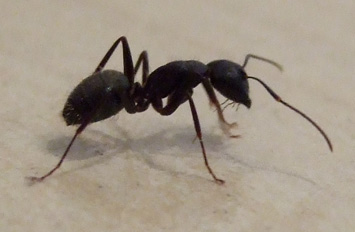
Ants
Ants love our houses. Our homes not only breathe, but they also exhale, and that air they exhale is warm and moist, and also has food smells, attracting ants inside.
Sometimes ants may be trailing in from the ground outside and into your house through a gap around your foundation or siding, or they may have even taken up house inside a wall void, of your house.
Depending on the species of ants, we may use baits or sprays, or a combination of the two. Most ant problems can be controlled with an inside localized treatment where the ants are being seen, and an outside perimeter treatment to control the colonies outside.
If you like, we can spray the rest of your house inside as well for spiders and other occasional invaders while we are there.
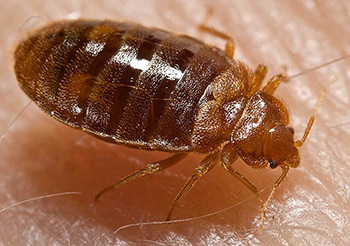
Bed Bugs
Bedbugs are a very difficult insect to eliminate on your own. If you have attempted it yourself, you may have found that by the time you think they are gone, they show up again. If that has happened a few times, chances are they are getting worse, and may possibly take longer to eliminate. Bedbugs will also hide in many places besides beds, and our inspectors are experienced in finding them in places homeowners may not think of!
If you have a light infestation of bedbugs, a spray treatment with a follow-up or two may eliminate your problem in a small time, but with a heavy infestation it may be necessary for us to heat treat those rooms before the spray treatment is done.
Because bedbugs can live more than a year, dormancy issues, or the chance of being “reintroduced” into the home by someone, it may be necessary for a three-month follow-up spray treatment to be certain they are completely gone!
Give us a call and we will come over to give you recommendations on the best course of action!
How do people get bed bugs?
- Just by moving in — Bed bugs can live for many months without a bloodmeal, and can survive somewhere in a room even if painted and re-carpeted.
- Visitors — Many customers have gotten bed bugs after helping a friend or family member that had to leave their apartment or home.
- Traveling — You never know who could have been in a hotel room before you, or even a chair before you. Even your suitcases touch others in checked baggage.
- Sleepovers — Someone in the family spending a night over at another residence that could have bed bugs.
- Schools — Some children live in homes with heavy infestations and bring them to school on clothing or on bookbags. That bookbag can touch your kids, or visit your house as well.
- Garage sales — Used clothing, furniture, and other items can contain bed bugs.
- Adjoining apartments — People will rarely come out and tell you they have bed bugs. They’re spraying to try and get rid of them may have chased them to your side.
- Delivery trucks — Many times the same truck that brings new furniture can also haul off old furniture, that could have bed bugs.
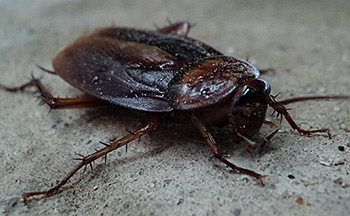
Cockroaches
We have several species of cockroaches in our area, but the two most commonly found in homes are the German and oriental cockroaches. They start out as small nymphs and gradually molt several times to the adult stage. Sometimes the species can be confused because they look different in the smaller stages then the adults.
Generally, the German cockroaches like to start hanging out in your kitchen, maybe finding them on the countertop, inside cabinets, or around the refrigerator. Oriental cockroaches usually will start showing up in basements or on the floors, entering from the outside or sometimes even up drains.
Our General Treatment Service, inside and out, including any crawlspaces needing treated, should stop an oriental cockroach infestation. You could still see some for a short time after treatment due to eggs that can hatch inside wall voids. If you continue to see these occasionally after a couple weeks, let us know so we can schedule a follow-up visit.
If you are having a fair to heavy infestation of German cockroaches, we will need to come to your house to assess the problem to give you an estimate, and to see what preparation work may be needed before treatment.
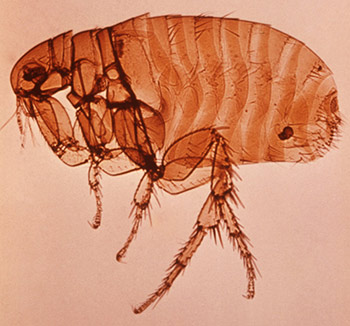
Fleas
Fleas like to live on animals to bite them for their blood. The female then lays her eggs on the animal hairs. The eggs, being slippery, will fall off the animal, particularly in areas they like to lay and sleep. After the egg hatches, the larvae like to hide in dark places to feed, such as under furniture, rugs, and deep in carpet fibers. With wood floors they can hide in the gaps between boards, and under the baseboard gaps. After some time, the larvae will spin itself into a cocoon stage called a pupa, where will stay until ready to emerge as an adult. The flea can also stay inactive inside the pupa cocoon until an animal or other activity is detected, which is why a house can be empty for several weeks, then be suddenly full of “starving fleas” when someone enters. This can even happen after a treatment, due to the fact that the cocoon stage cannot be penetrated by sprays. A follow-up may be necessary.
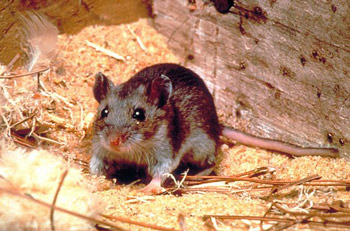
Mice and Rats
If you are having an issue with either of these rodents, we can come out and give you an estimate on treatment. Our baits must be placed in child/pet resistant containers, so we will suggest how many stations will be needed inside and out to eliminate your problem, and if you like, to help prevent future problems.
Basically, you buy the stations, and we can drop by occasionally and refill the stations, or you can fill them yourself with a key we can provide you. To be effective, the stations need fresh bait about every 2-3 months.
A lot of our customers will add this refill service to their Quarterly Service or Seasonal Service Treatment to have done on the same trip for a reduced rate.
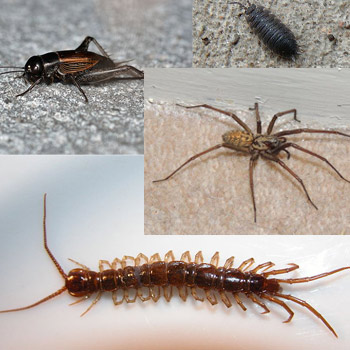
Occasional Invaders
Occasional invading insects enter buildings sometimes due to seasonal temperature changes, heavy rain periods, drought periods, or sometimes just due to heavy population buildup around the outside.
Many insects can be classed as occasional invaders, such as crickets, beetles, centipedes, sow bugs, oriental cockroaches, large spiders, stink bugs, Asian lady beetles, and more.
If you see a lot of these inside your home, our General Service Treatment inside and out, or even just sometimes the outside treatment, will help stop these insects outside before they get in.
If you are in an area where you see a lot of this activity throughout the year, you may want to look into our seasonal plan.
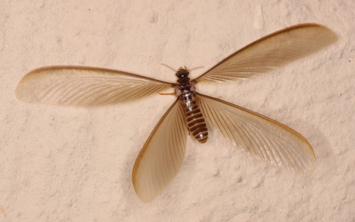
Termites
Termites, as you probably know, like to eat wood. Unfortunately, they can’t tell the difference between a dead tree root and a floor joist in your basement, or a wall stud in your wall.
In early spring, common around April and May, the winged reproductive stage of termites will fly or crawl out of existing termite colonies with the goal of starting new colonies. If you find these small bodied insects with long clear wings inside your home, we can take a look at them and determine first that they are termites, because some ant species can swarm at the same time, and look similar. If they are termites, we will inspect your home and give you an estimate on treatment.
Thinking of building a home? The best time to treat your home, for the most complete coverage for termites, is as it’s being built.
Contact us before the ground is broken for an estimate. We need to come at several stages as the house is being built, and will need to coordinate with the builder.
What We Do
Residential
We specialize in safe and effective methods of solving your pest problems.
Commercial
Pests can shut down your business or ruin its reputation. Don't worry, we can help!
Licensed in Iowa
and Illinois.
Our technicians are expertly trained and state licensed in both Iowa and Illinois.
Contact us today!
